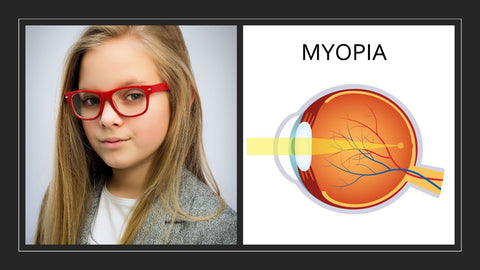
The Silent Pandemic – Myopia (Short sightedness)
We are currently in the midst of a terrible pandemic due to COVID-19, but there is another silent and insidious pandemic affecting even more of the world’s population. This is the extreme increase in cases of myopia or short sightedness.
Myopia currently affects 35% of the world’s population or 3.4 billion people. At the current rate of growth, by 2050, myopia will affect 50% of the world’s population (4.8 billion people). It is escalating at an alarming rate of one million cases per week. Some parts of the world have even faster rates of expansion, with a staggering 96.5% of 19 year old men in Seoul, South Korea short sighted according to a recent and troubling study.
Of particular concern is the burgeoning trend of children with myopia or short sightedness diagnosed at much younger ages than before. The earlier myopia develops, the worse it will progress and the more likely it will result in irreversible vision loss or even blindness. So tackling this myopia pandemic is imperative.
What is myopia?
Myopia occurs when the eye grows too much along one length. This results in wavelengths of light from the viewed object focused in front of the retina, rather than on it. Thus distant objects appear blurred giving rise to the term short sighted. The younger the age that a child becomes short sighted, the higher the risk of myopia progressing to very high levels. This increases the risk of serious eye conditions and potentially blindness in later life.
What is causing this explosion in myopia?
One of the biggest causes, especially in children, appears to be due to the explosion in digital device use. These smartphones and tablets are held in the hands and very close to the eyes. Using these devices for extended periods of time causes a strain on the visual system. The eyes and associated muscles become adapted to close distance vision and thus long distance vision deteriorates. The longer the length of time doing close concentrated work, the greater a problem this becomes.
These devices also emit high energy blue light which can lead to eyestrain and tired eyes. The blue light decreases the production in melatonin (a sleep hormone), which disrupts the circadian rhythm and can lead to disturbed and poor quality sleep.
Optometrist, Seamus Flynn from Sapphire Eyewear , who specialise in blue light glasses, recently carried out a survey that shows that we are now spending on average 3.5 hours a day on their smartphones and that does not include the time spent on other digital devices such as tablets and laptops.
In order to tackle this problem, children should be encouraged to spend time playing outdoors as much as possible and to get their eyes focusing on the far distance. A recent study has shown that exposure to sunlight reduces the progression of myopia as well as eating leafy dark green vegetables, such as broccoli, cabbage and spinach, which increases the blood levels of lutein. Additionally, wearing blue light glasses that block the harmful blue light lessens the impact on the sleep cycle and ease eye strain.
Why is it important to halt the progression of myopia?
Most people are not overly concerned about myopia apart from the inconvenience of having to wear glasses or contact lenses. What many do not know is that myopia is one of the world’s leading causes of irreversible vision loss and blindness. It can cause macular degeneration, retinal detachment, glaucoma, and cataracts. The risk increases with higher levels of short sightedness, so it is important to try to minimise it’s progression.
How do we reduce the progression of myopia?
Of critical importance is reducing the time spent doing close concentrated activity on digital devices. Spending more time outdoors where the eyes have to look at objects in the distance is key. There are other methods to slow myopia down. Bifocal glasses or contact lenses have been shown to improve myopia progression in children. Eye drops called atropine are also an effective method of myopia control. It is used in Asia and is being trialled in Europe, including Ireland.
Although the excessive blue light has not yet been proven to increase the progression of myopia, it does cause eyestrain, headaches and tired eyes. With the enormous increases in handheld screen-time, especially amongst children, blue light glasses plays a critical role in mitigating these effects.
It is important to get your children’s eyes tested at least once a year, or as directed by your optician. Some parents fear that if their corrective lenses are constantly updated, it will speed up the rate of decline as their eyes will become “dependent” upon their new prescription. However, this is not true and in fact myopia under-correction has been shown to speed up myopia progression which emphasises the importance of regular testing.
Raising awareness of this silent pandemic is the first step in managing the worrying expansion of short sightedness. Getting children tested, reducing screen-time with tablets and smartphones, and getting outdoors where we naturally look into the distance are all essential lifestyle changes to prevent and slow down the development of myopia, especially in our vulnerable children.


